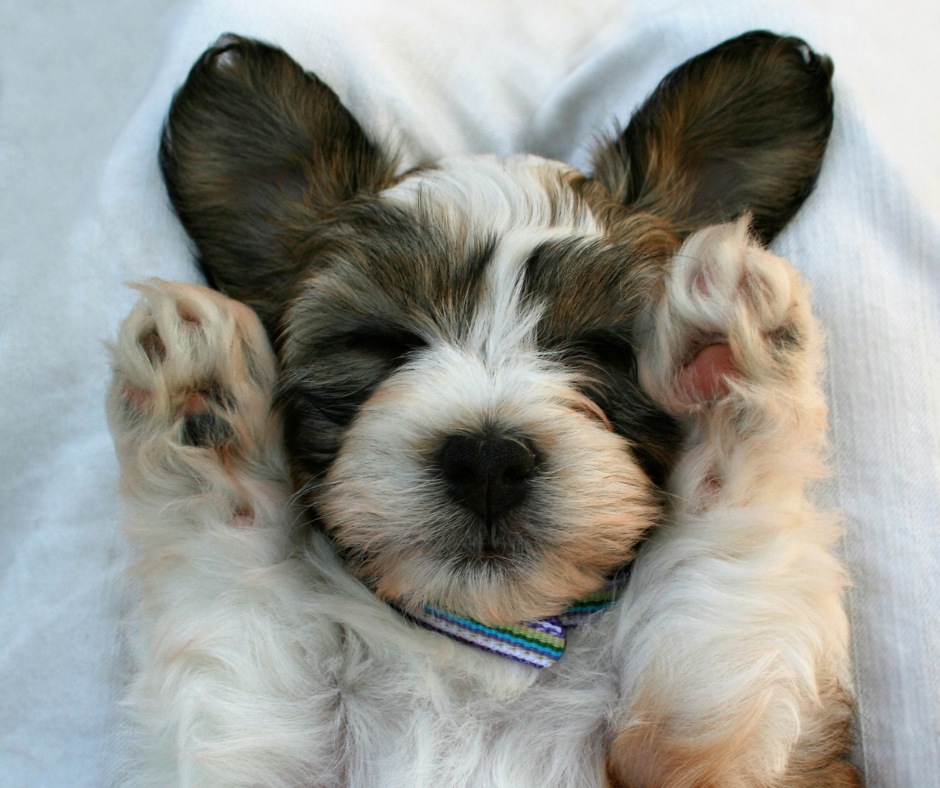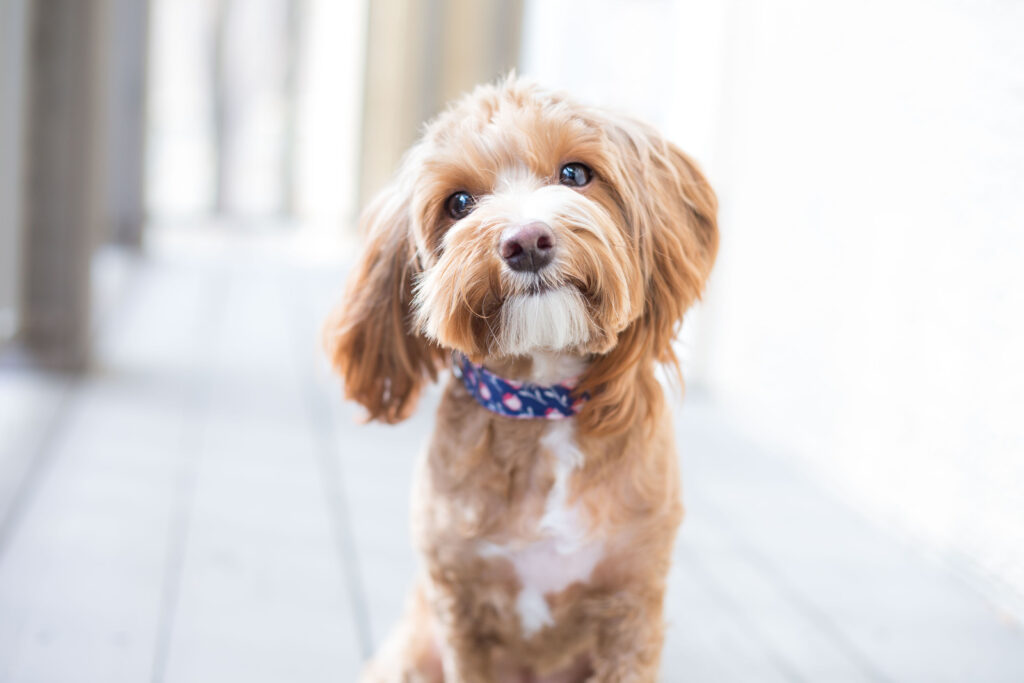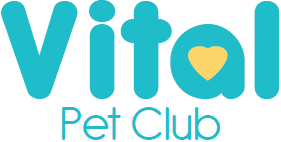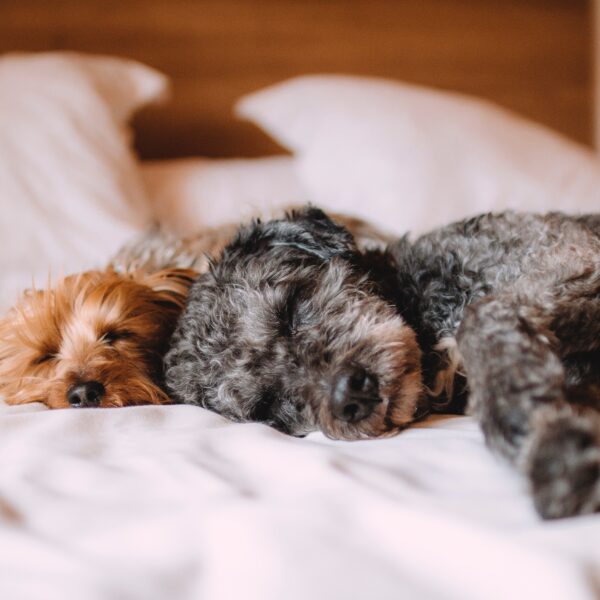What you need to get started!
Got a new pup on the way? Take a look at our checklist below to make sure you’ve got everything you need to welcome your furry bundle of joy. Puppies should stay with their mum until they are at least 8 weeks old, as a newborn puppy picks up important socialisation skills and behaviours from their mum and litter mates. Whether you’re a newbie owner or it’s just been a while since you had a new puppy, take a look at our guide and new puppy checklist.
Checklist for new puppy
- Puppy car carrier for the journey home ❤ Equipped with newspaper in case of accidents, and a blanket to keep cosy. Longer term, there’s different options for car travel including crates and doggy seatbelts and your pup will benefit from a bit of training to get used to these.
- Complete, balanced puppy diet. We recommend feeding the same diet that your puppy has eaten with the breeder. If you want to introduce a new food, do so very gradually by mixing in small portions with their old food. Avoid sudden dietary changes as this can lead to diarrhoea and vomiting.
- Puppy pads. These might come in handy to help with toilet training.
- Puppy-safe toys. Your local pet shop will be able to offer advice about the best options for your fur baby for plenty of fun adventure and games, as well as training incentives.
- Training treats. Specially designed dog treats are best, as some human foods are poisonous to our pets. Ask your local pet shop for more info, and take a look at our dog training guide.
- Bed and crate. If you are choosing to crate train your puppy, it needs to be big enough for them to stand and move around comfortably. They will also need a bed for extra naps!
- Bowls for food and water. Puppies may find shallower bowls easier at first but this can be messy so you might need to pop newspaper underneath to catch spills.
- Collar, lead and ID tag. It’s worth getting your puppy used to a collar from an early age, and it is important that it fits properly. Find out more here.
- Poo bags. One of those puppy essentials! It might be too soon for walkies, but they’ll come in handy for any accidents in the house and clearing up the garden too.
- Pet-safe cleaning products. You will need a non-toxic but effective spray to clean out your puppy’s crate and car carrier.
- Brush or comb. This is particularly important for long-haired dogs, but all breeds will benefit from getting used to grooming early on to help avoid painful knots.
- Finding a vet nearby. The RCVS Find a Vet tool is a handy feature to find local practices. Your vet will be able to give advice on flea and worm treatments, vaccinations, neutering and more. Plus read this article for more advice.
- Pet Insurance and Health Plans. Veterinary care can be costly, but pet insurance can help provide peace of mind should the unexpected happen. Vet practices sometimes offer health plans which can include discounts on routine treatments.
- Puppy-proofing your home and garden. More on this below.

Puppy feeding guide
It is usually best to stick to the same diet that your pup has been fed by the breeder. This is because sudden changes in their food can lead to diarrhoea, and sometimes vomiting, especially when added to the stress and excitement of being in a new home. Diarrhoea can be more of an issue in young animals as they are more at risk of dehydration.
You should find a puppy feeding guide calculator on the back of the puppy food packet, generally a table referring to weight and age. This will tell you how much and how often to feed a puppy. For more advice, take a look at this related article.
Tips for puppy training
Wondering when to start puppy training? It’s never too early, but you might find this rough schedule for puppy training handy including how to crate train.
Puppy proofing my home and garden
- Store cleaning products, medicines, garden products and other hazardous chemicals out of reach of your pets. The same goes for any human foods that are unsafe for dogs to eat such as chocolate, garlic, onions and raisins. Bear in mind that our pooches can be pretty sneaky, so it is better to keep these behind closed doors rather than on open shelves.
- Research which house and garden plants could pose a risk to your puppy. Remove any toxic houseplants, or keep them well out of reach. Poisonous garden plants should also be removed, or effectively fenced-off, otherwise your pets will need supervising in the garden.
- Close the lid to toilets, laundry baskets and bins to make sure adventurous hounds don’t fall inside.
- Take care with electronics. Try to reduce the number of wires in the room if your pup will be left alone when you are out, as these can be tempting to chew. You could also consider using socket covers.
- Avoid choking hazards. Make sure to tidy away small items, especially if your puppy is going to be left unattended, and consider crate training to help keep them safe while you’re out.
- Ensure that garden fences are tall enough to prevent dogs from escaping, and fill in any holes. To be on the safe side, any water features should also be fenced off. Dogs should be supervised in the garden until they have been vaccinated and neutered, just in case they manage to run off. By law, your puppy should have been microchipped with the breeder, but you will need to update the details to your own address and contact details.

Found our new puppy checklist helpful? Love a good freebie? Sign up below to be the first to know about great pet offers and for more handy tips!


